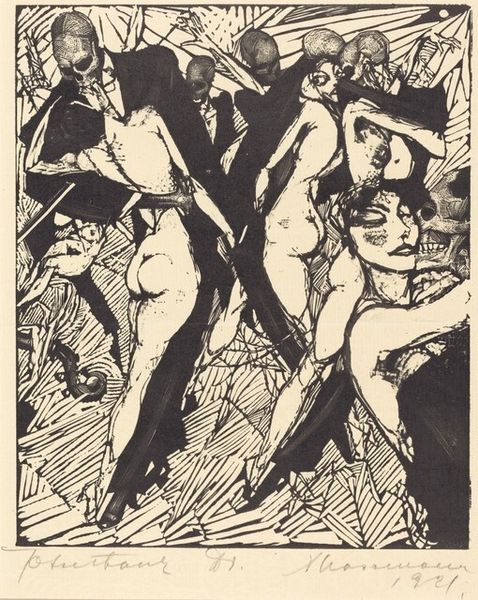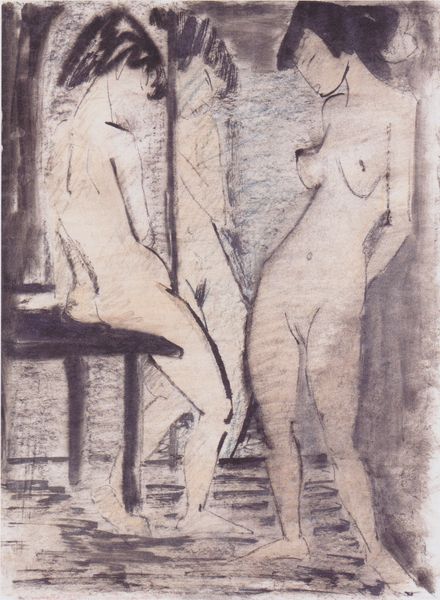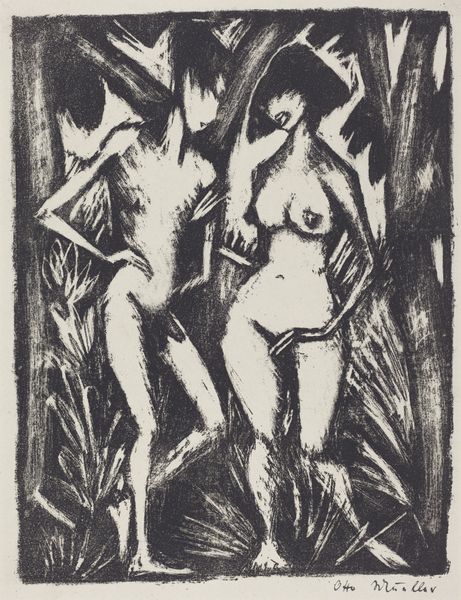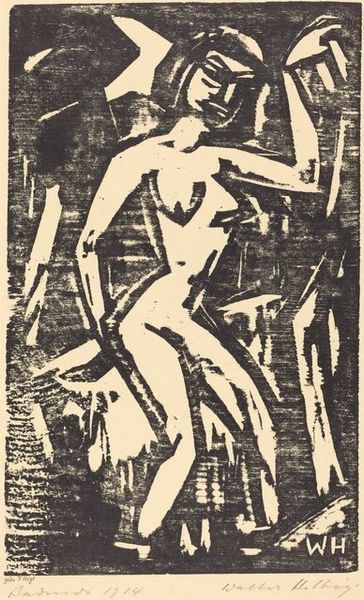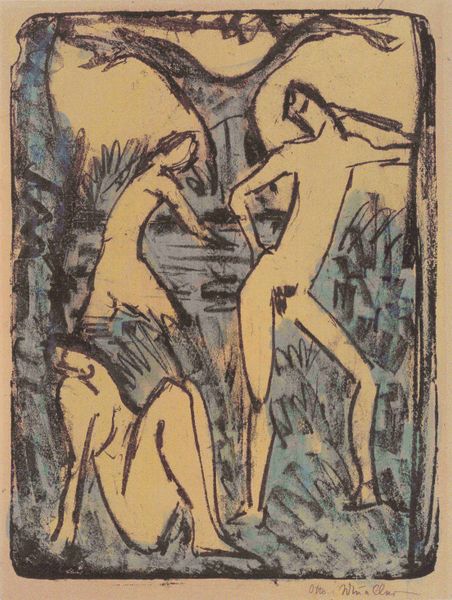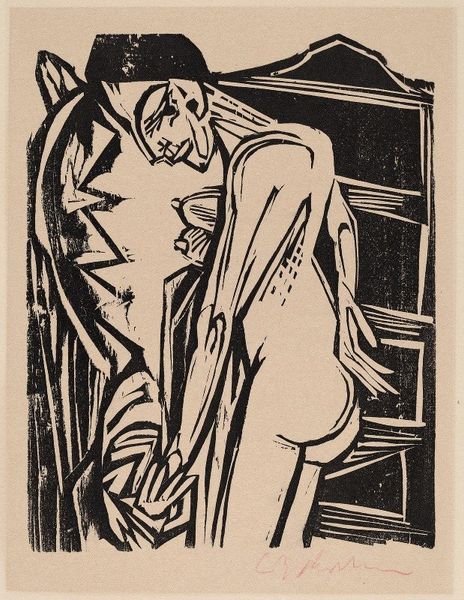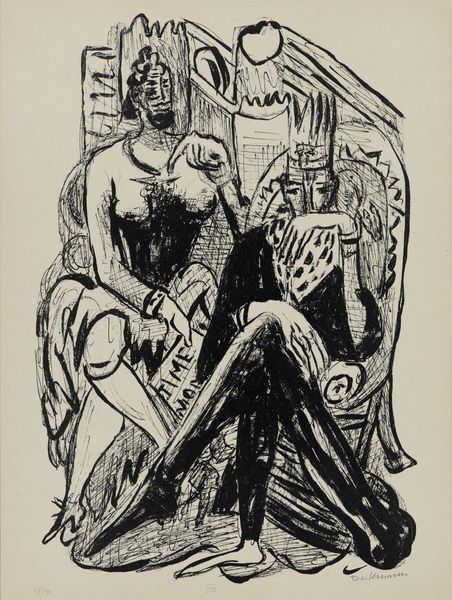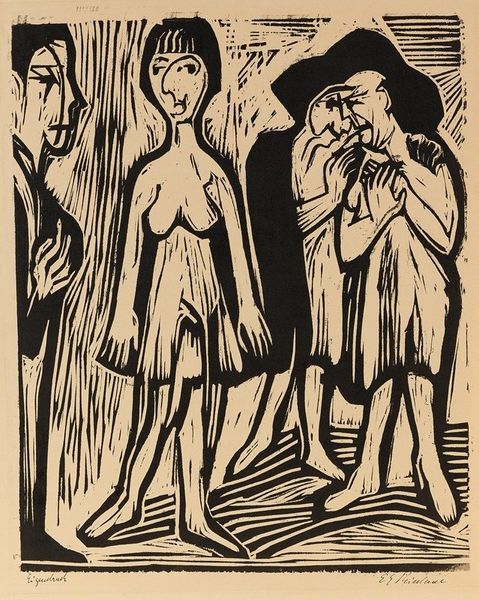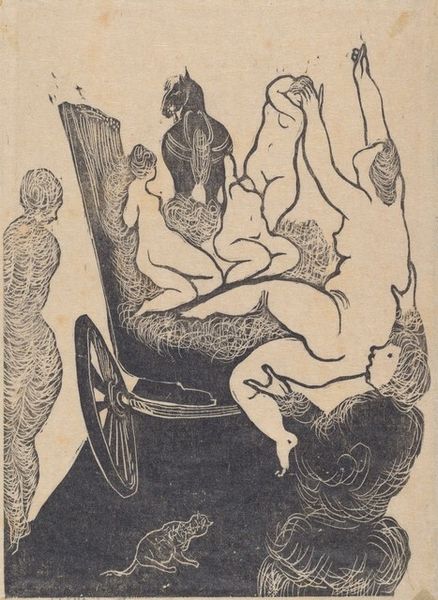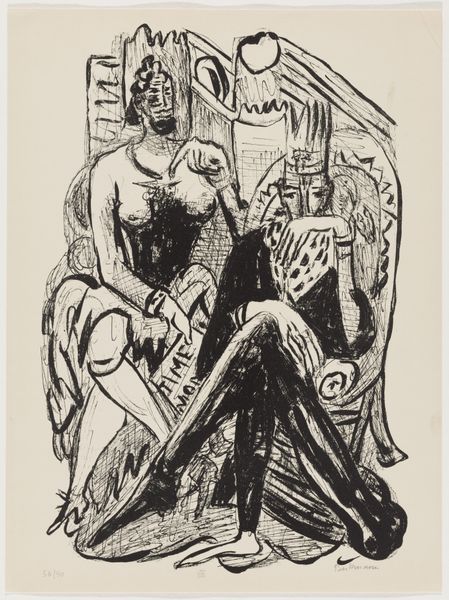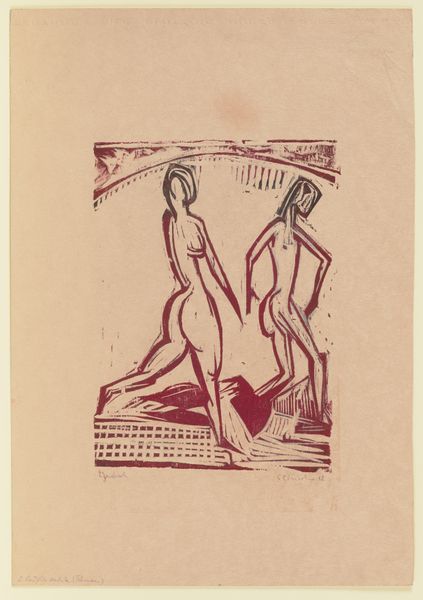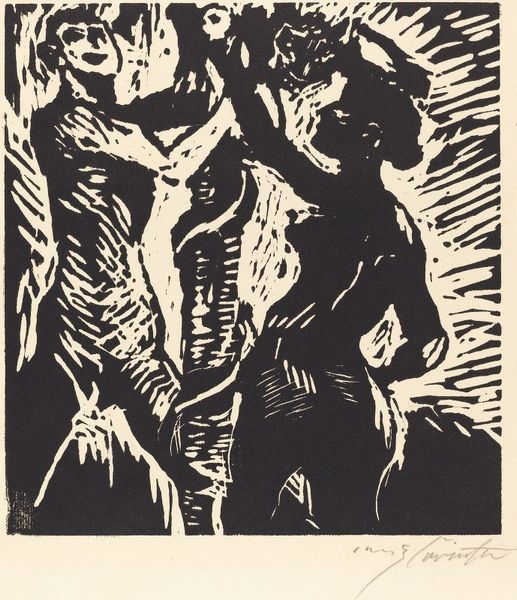
Three Girls in front of a Mirror (Drei Madchen vor dem Speigel) c. 1922
0:00
0:00
drawing, lithograph, print, etching
#
drawing
#
lithograph
# print
#
etching
#
german-expressionism
#
figuration
#
expressionism
#
nude
Copyright: National Gallery of Art: CC0 1.0
Curator: This is Otto Mueller's "Three Girls in front of a Mirror", circa 1922. It’s a compelling example of German Expressionist printmaking. What strikes you initially about this lithograph? Editor: The first thing I notice is the rawness of the lines and how directly that informs the mood – there’s a tension, an anxiety almost, in the figures. The scratchiness makes you very aware of the process of making. Curator: Absolutely. The material qualities – the lithographic ink on paper – convey an immediacy, but it's essential to understand this image within the broader historical and societal framework of Weimar Germany. Expressionism often grappled with the anxieties of modernity and social upheaval, particularly for women navigating new freedoms and constraints. Editor: I see that in the girls’ postures. They aren't idealized. Their bodies seem almost geometric, constructed with these simple, repeated gestures and shapes. Mueller’s focus is on volume. It also raises interesting questions about representation and who this work was produced for. What was the socio-economic status of the model or artist? What workshops did Mueller make work at and who had access? Curator: Those are crucial considerations. We can also interpret the mirror as a metaphor. It represents self-perception, the gaze of society, and the complex relationship between identity and representation for these women at this moment. How were new types of labor being formed? What societal issues are present at this moment? What were women contending with when their self-fashioning met representation in popular culture? Editor: I like how you read that through the lens of social power. It gives depth to the material and visual aspects. The production techniques here are clearly quite urgent and convey so much anxiety about subject formation through the gaze, just like you pointed out. I am compelled to explore further the way that printmaking as a specific mode of artistic production could offer new approaches for artmaking and expression that diverged from older more accepted forms of representation and production such as painting or drawing. Curator: Indeed. And perhaps that’s the enduring power of this print: to confront us with the questions and concerns that still resonate today regarding self-perception, societal expectations, and the myriad forces that shape who we become. Editor: Right. It makes you think about representation, about materials and means of production. Art that still raises questions decades later—that's a powerful thing.
Comments
No comments
Be the first to comment and join the conversation on the ultimate creative platform.
